Search Result
Results for "
CNS penetration
" in MedChemExpress (MCE) Product Catalog:
3
Isotope-Labeled Compounds
| Cat. No. |
Product Name |
Target |
Research Areas |
Chemical Structure |
-
- HY-116016A
-
|
L-DOPA ethyl ester hydrochloride; Levodopa ethyl ester hydrochloride
|
Dopamine Receptor
Drug Metabolite
|
Neurological Disease
|
|
Etilevodopa (L-Dopa ethyl ester) hydrochloride, an ethyl-ester proagent of Levodopa, is rapidly hydrolyzed to Levodopa and ethanol by nonspecific esterases in the gastrointestinal tract. Etilevodopa hydrochloride is used for the treatment of Parkinson disease (PD). Levodopa is the direct precursor of dopamine and is a suitable proagent as it facilitates CNS penetration and delivers dopamine .
|
-
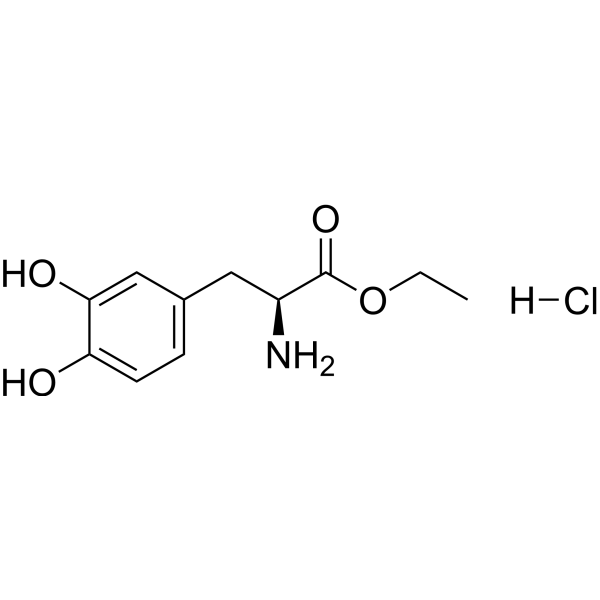
-
- HY-108460
-
|
|
TRP Channel
|
Neurological Disease
|
|
A-784168 is a potent and orally active inhibitor of vanilloid receptor type 1 (TRPV1). Vanilloid receptor type 1 (TRPV1) is a ligand-gated nonselective cation channel that is considered to be an important integrator of various pain stimuli such as endogenous lipids, capsaicin, heat, and low pH. A-784168 has good CNS penetration .
|
-
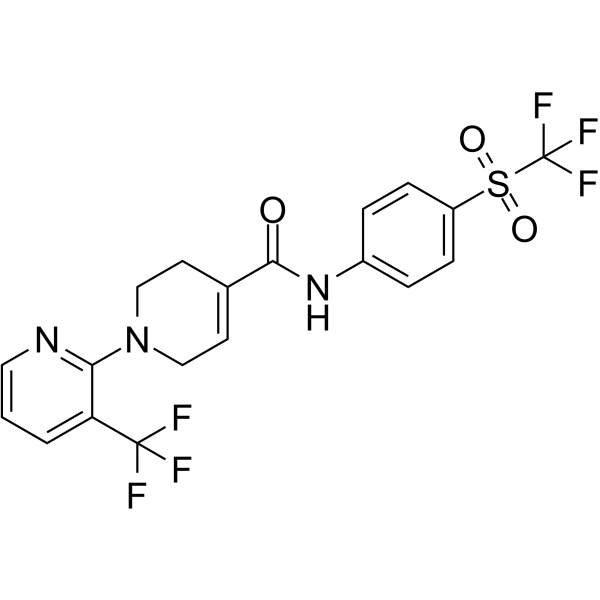
-
- HY-144696
-
|
|
DYRK
|
Neurological Disease
|
|
Dyrk1A/α-synuclein-IN-2 (Compound b20) is a dual Dyrk1A and α-synuclein aggregation inhibitor with an IC50 of 7.8 µM for α-synuclein. Dyrk1A/α-synuclein-IN-2 has high predictive CNS penetration and neuroprotective effect .
|
-
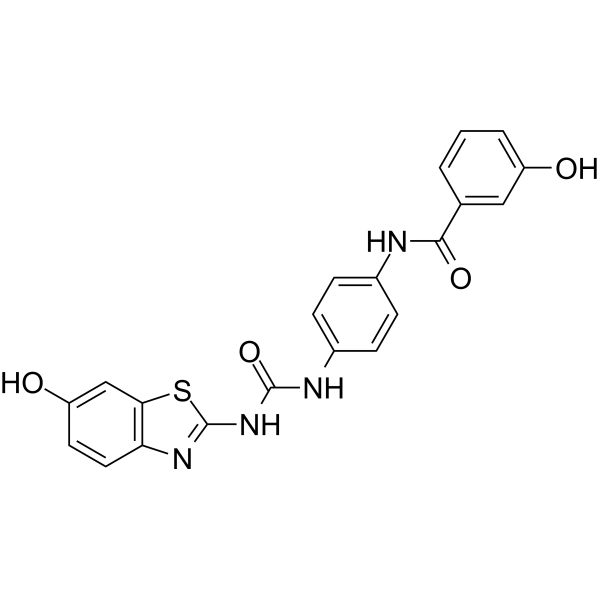
-
- HY-144695
-
|
|
DYRK
|
Neurological Disease
|
|
Dyrk1A/α-synuclein-IN-1 (Compound b1) is a dual Dyrk1A and α-synuclein aggregation inhibitor with IC50 values of 177 nM and 10.5 µM, respectively. Dyrk1A/α-synuclein-IN-1 has high predictive CNS penetration and neuroprotective effect .
|
-
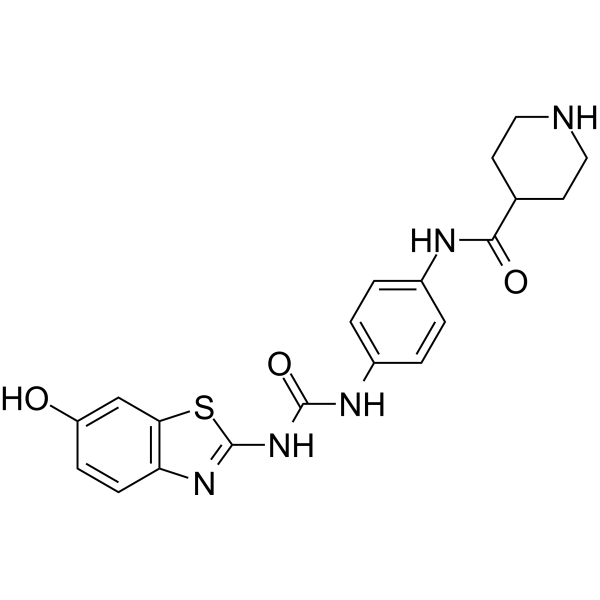
-
- HY-116016
-
|
L-DOPA ethyl ester; Levodopa ethyl ester
|
Dopamine Receptor
Drug Metabolite
|
Neurological Disease
|
|
Etilevodopa (L-Dopa ethyl ester), an ethyl-ester proagent of Levodopa, is rapidly hydrolyzed to Levodopa and ethanol by nonspecific esterases in the gastrointestinal tract. Etilevodopa is used for the treatment of Parkinson disease (PD). Levodopa is the direct precursor of dopamine and is a suitable proagent as it facilitates CNS penetration and delivers dopamine .
|
-
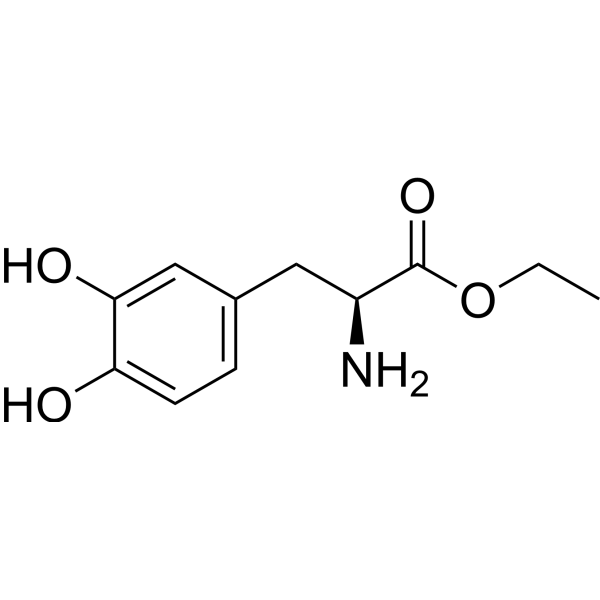
-
- HY-147999
-
|
|
Bacterial
Fungal
Cytochrome P450
|
Infection
|
|
GlcN-6-P Synthase-IN-1 (Compound 4d) is a Glucosamine-6-phosphate (GlcN-6-P) synthase inhibitor with an IC50 of 3.47 μM. GlcN-6-P Synthase-IN-1 exhibits significant antimicrobial activity. GlcN-6-P Synthase-IN-1 has good penetration in the CNS and is able to inhibit the cytochrome P450, CYP3A4 isoform .
|
-
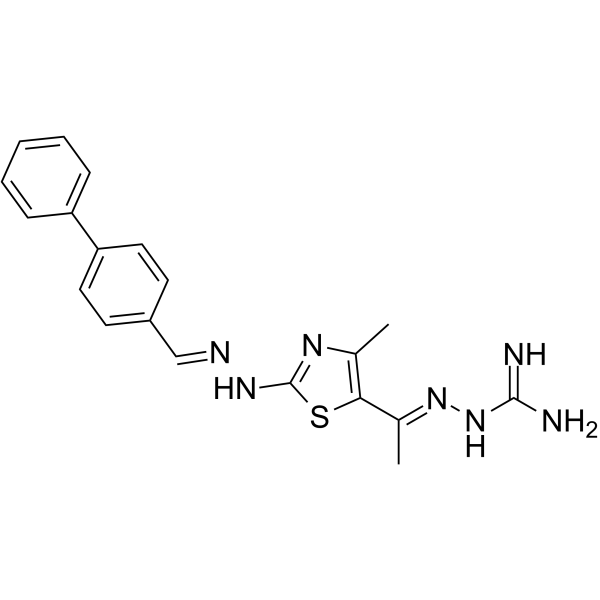
-
- HY-120184
-
|
AZ13713945
|
mAChR
|
Neurological Disease
|
|
VU0467485 (AZ13713945) is a potent, selective, and orally bioavailable muscarinic acetylcholine receptor 4 (M4) positive allosteric modulator (PAM). VU0467485 (AZ13713945) potentiates activity of ACh at M4 with EC50s of 26.6 nM and 78.8 nM at rat and human M4 receptors, respectively. VU0467485 (AZ13713945) shows selectivity for M4 over human and rat M1/2/3/5. VU0467485 (AZ13713945) displays moderate to high CNS penetration. VU0467485 (AZ13713945) has antipsychotic-like activity .
|
-
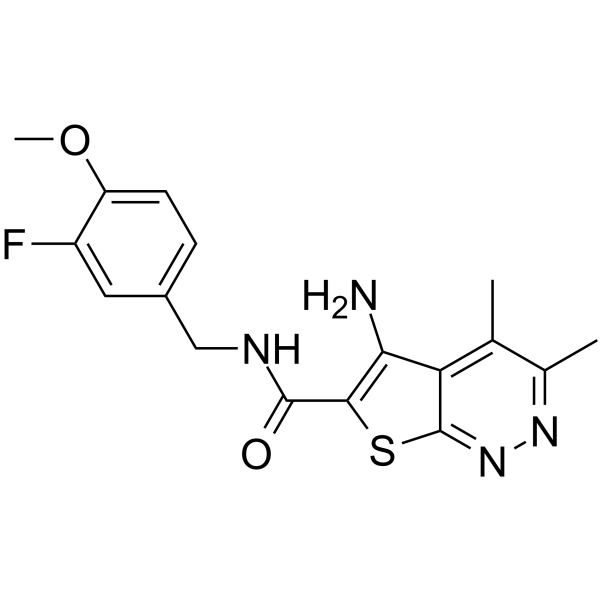
-
- HY-130121
-
|
|
Others
|
Neurological Disease
|
|
MK-8719 is a highly potent and selective O-GlcNAcase (OGA) inhibitor (Ki=7.9 nM for hOGA) with excellent CNS penetration .
|
-
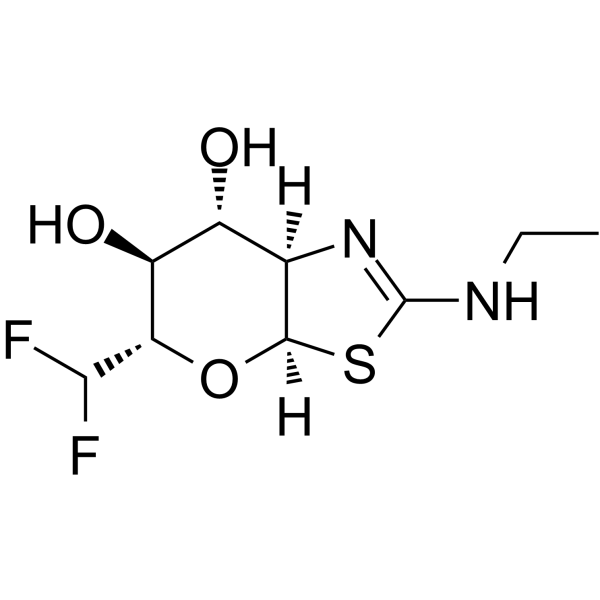
-
- HY-108463
-
|
|
TRP Channel
|
Inflammation/Immunology
|
|
A-967079 is a selective TRPA1 receptor antagonist with IC50s of 67 nM and 289 nM at human and rat TRPA1 receptors, respectively, and has good penetration into the CNS.
|
-
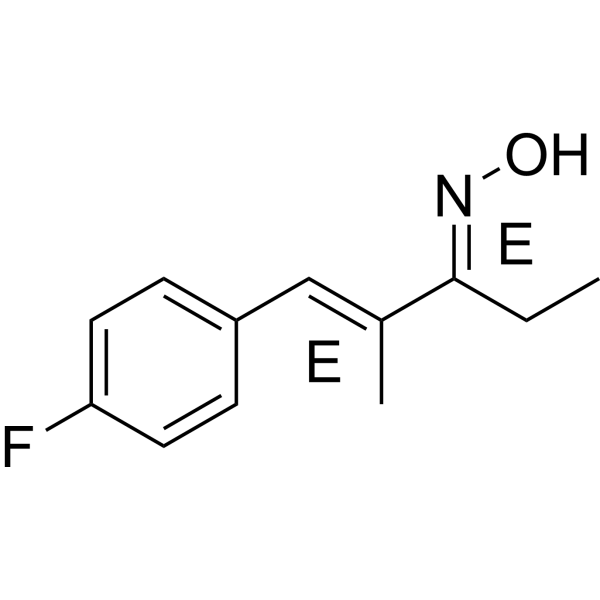
-
- HY-16617
-
|
VU0424238
|
mGluR
|
Neurological Disease
|
|
Auglurant (VU0424238) is a novel and selective mGlu5 antagonist with an IC50 value of 11 nM (rat) and an IC50 value of 14 nM (human). Auglurant (VU0424238) has an acceptable CNS penetration .
|
-
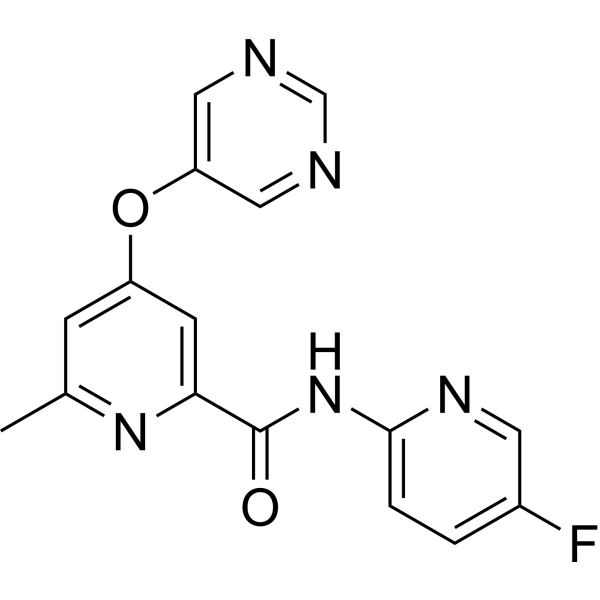
-
- HY-111258
-
-
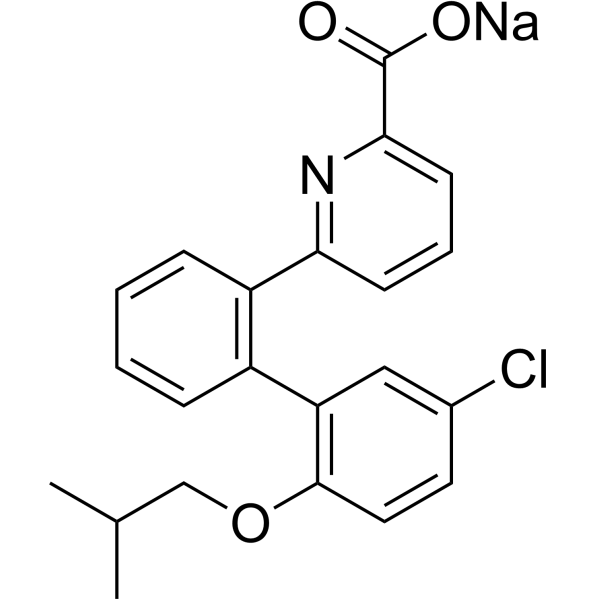
-
- HY-101789
-
|
|
Sodium Channel
|
Neurological Disease
|
|
Nav1.7-IN-3 is a selective, orally bioavailable voltage-gated sodium channel Nav1.7 inhibitor with an IC50 of 8 nM. Pain relief. Limited CNS penetration .
|
-
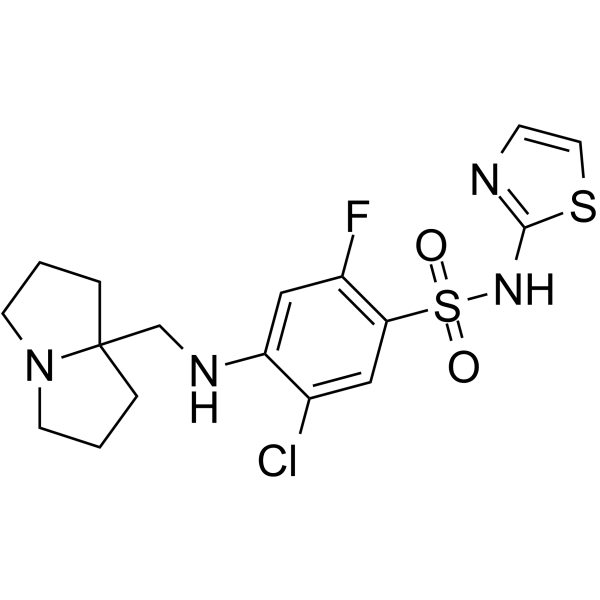
-
- HY-101281
-
|
|
|
|
|
VU 6008667 is a selective negative allosteric modulator of M5 NAM with IC50s of 1.2 μM and 1.6 μM for human M5 and rat M5, respectively. High CNS penetration .
|
-
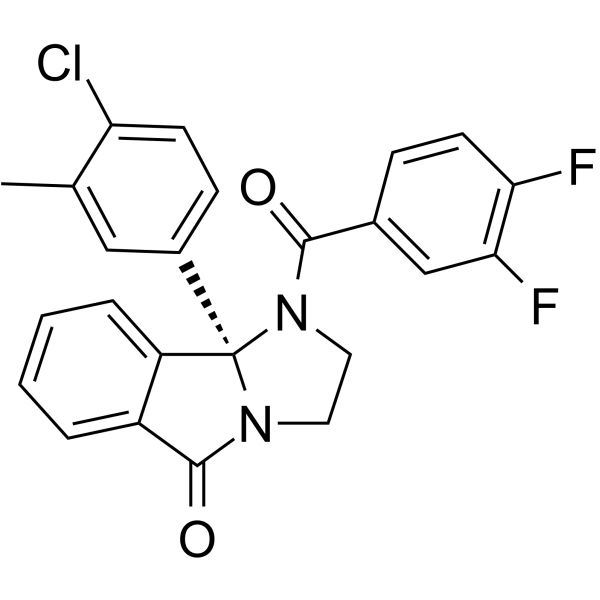
-
- HY-147405
-
|
PF-07284890; ARRY-461
|
Raf
|
Cancer
|
|
Tinlorafenib (PF-07284890) (compound 10) is an orally active BRAF kinase inhibitor, with IC50s of 4.25 and 2.7 nM for BRAF V600E/V600K respectively. Tinlorafenib demonstrates CNS penetration and can be used in the research of BRAF-associated malignant and benign tumors of the CNS as well as extracranial malignancies .
|
-
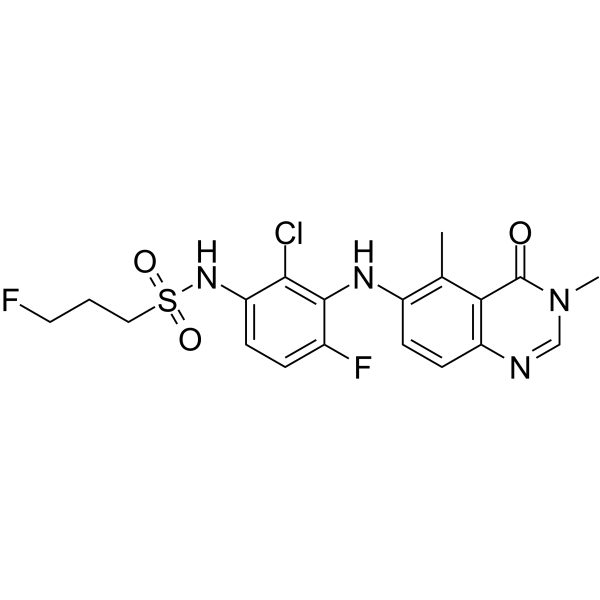
-
- HY-B0250A
-
|
BCH-189 salicylate
|
HIV
Reverse Transcriptase
HBV
|
Infection
|
|
Lamivudine (BCH-189) salicylate is an orally active nucleoside reverse transcriptase inhibitor (NRTI). Lamivudine salicylate can inhibit HIV reverse transcriptase 1/2 and also the reverse transcriptase of hepatitis B virus. Lamivudine salicylate can penetrate the CNS .
|
-
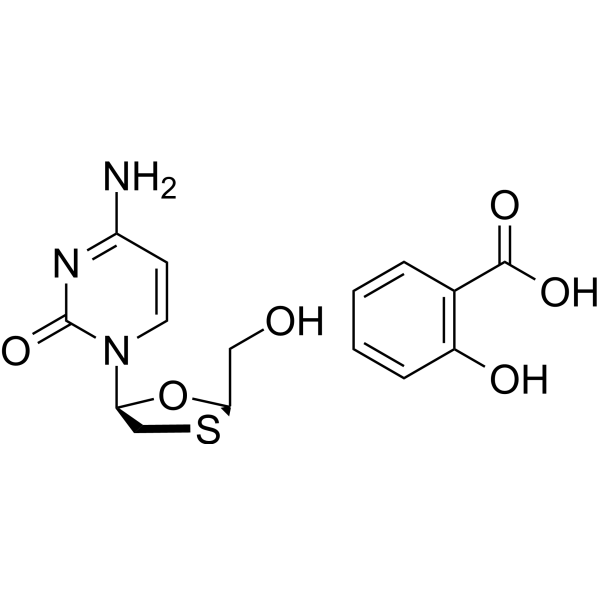
-
- HY-13011S
-
|
CH5424802-d8; RO5424802-d8; AF802-d8
|
Anaplastic lymphoma kinase (ALK)
|
Cancer
|
|
Alectinib-d8 is the deuterium labeled Alectinib. Alectinib (CH5424802) is a potent, selective, and orally available ALK inhibitor with an IC50 of 1.9 nM and a Kd value of 2.4 nM (in an ATP-competitive manner), and also inhibits ALK F1174L and ALK R1275Q with IC50s of 1 nM and 3.5 nM, respectively[1]. Alectinib demonstrates effective central nervous system (CNS) penetration[2].
|
-
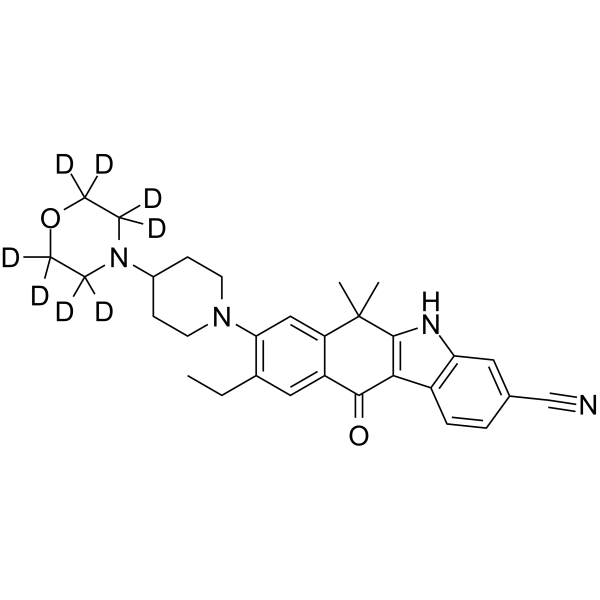
-
- HY-13011S1
-
|
CH5424802-d6; RO5424802-d6; AF802-d6
|
Isotope-Labeled Compounds
Anaplastic lymphoma kinase (ALK)
|
Cancer
|
|
Alectinib-d6 is deuterium labeled Alectinib. Alectinib (CH5424802) is a potent, selective, and orally available ALK inhibitor with an IC50 of 1.9 nM and a Kd value of 2.4 nM (in an ATP-competitive manner), and also inhibits ALK F1174L and ALK R1275Q with IC50s of 1 nM and 3.5 nM, respectively[1]. Alectinib demonstrates effective central nervous system (CNS) penetration[2].
|
-
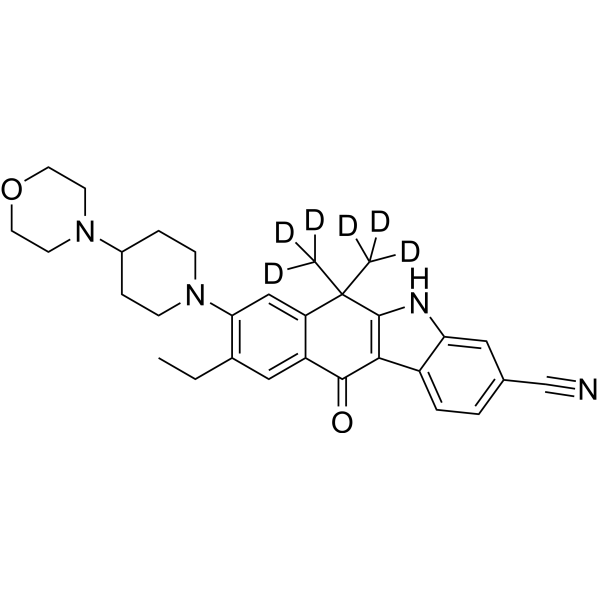
-
- HY-17595
-
|
|
Parasite
Apoptosis
Microtubule/Tubulin
|
Infection
Cancer
|
|
Mebendazole is a highly effective, broad-spectrum antihelmintic against nematode infestations. Mebendazole also exhibits inhibitory effect against glioblastoma multiforme (GBM), inhibits Hedgehog pathway and tubulin polymerization. Mebendazole is orally active and can cross CNS penetration .
|
-
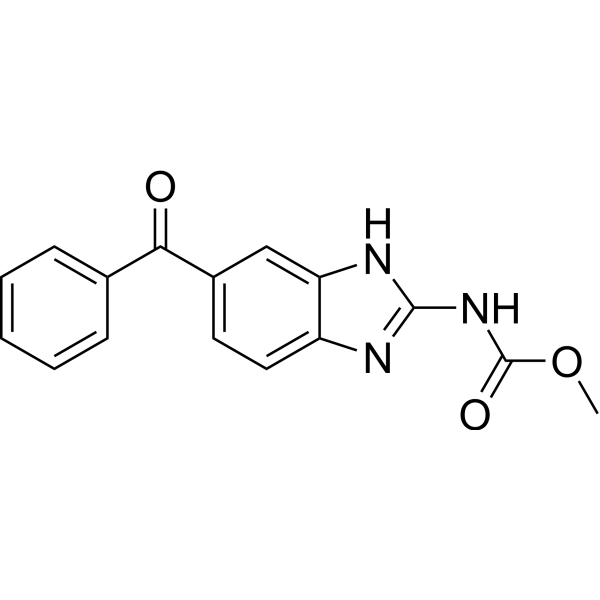
-
- HY-163131
-
|
|
Glucosylceramide Synthase (GCS)
|
Neurological Disease
|
|
Glucosylceramide synthase-IN-4 (compound 12) is a potent glucosylceramide synthase (GCS) inhibitor, with an IC50 of 6.8 nM. Glucosylceramide synthase-IN-4 shows excellent PK properties and stability in human hepatocytes. Glucosylceramide synthase-IN-4 has good CNS penetration and acceptable PXR selectivity .
|
-
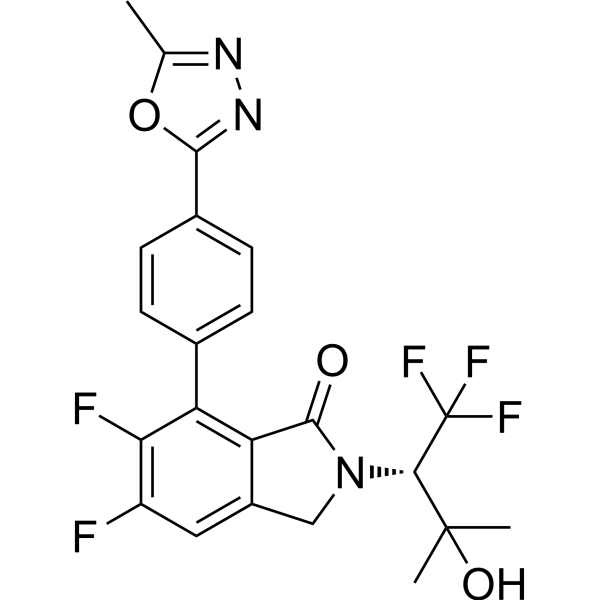
-
- HY-146101
-
|
|
iGluR
|
Neurological Disease
|
|
NMDA receptor antagonist 5 (Compound 10e) is a potent, brain permeable and non-toxic NMDA receptor antagonist. NMDA receptor antagonist 5 can be used for neurological disorder research .
|
-
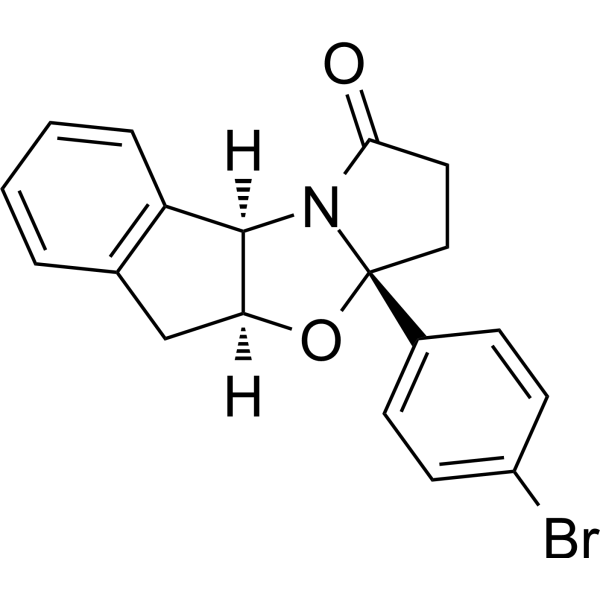
-
- HY-145086
-
|
|
Others
|
Metabolic Disease
|
|
R-PSOP is highly potent and selective nonpeptidic NMUR2 antagonist. R-PSOP binds to NMUR2 with the Kis of 52 and 32 nM for the human and rat NMUR2, respectively. R-PSOP shows moderate CNS penetration. R-PSOP can be used for the research of the eating disorders, obesity, pain, and stress-related disorders .
|
-
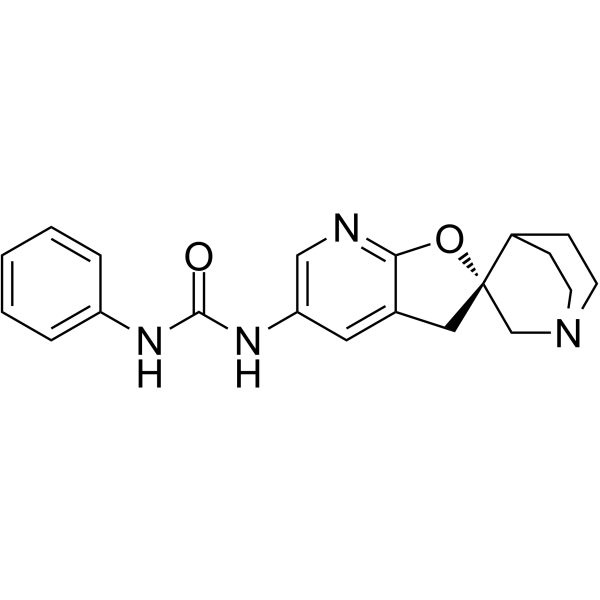
-
- HY-109189
-
|
BPI-7711
|
EGFR
|
Cancer
|
|
Rezivertinib (BPI-7711) is an orally active, highly selective and irreversible third-generation EGFR tyrosine kinase inhibitor (TKI). Rezivertinib exhibits high potency against the common activation EGFR and the resistance T790M mutations. Rezivertinib has excellent central nervous system (CNS) penetration and has antitumor activity .
|
-
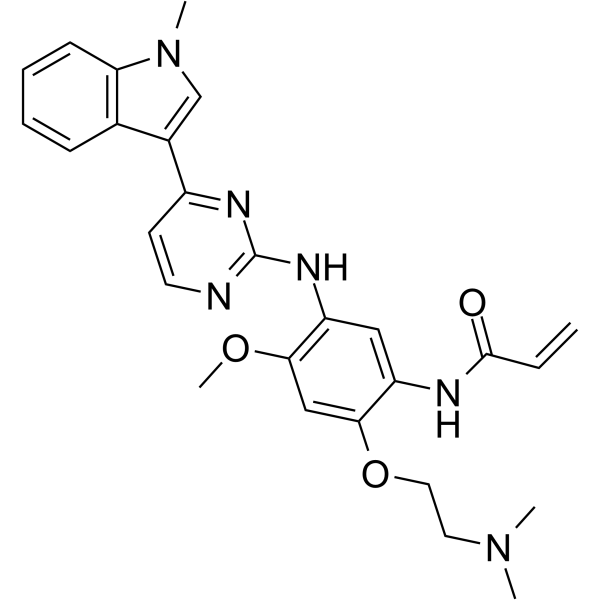
-
- HY-13011
-
Alectinib
Maximum Cited Publications
26 Publications Verification
CH5424802; RO5424802; RG7853
|
Anaplastic lymphoma kinase (ALK)
|
Cancer
|
|
Alectinib (CH5424802) is a potent, selective, and orally available ALK inhibitor with an IC50 of 1.9 nM and a Kd value of 2.4 nM (in an ATP-competitive manner), and also inhibits ALK F1174L and ALK R1275Q with IC50s of 1 nM and 3.5 nM, respectively . Alectinib demonstrates effective central nervous system (CNS) penetration .
|
-
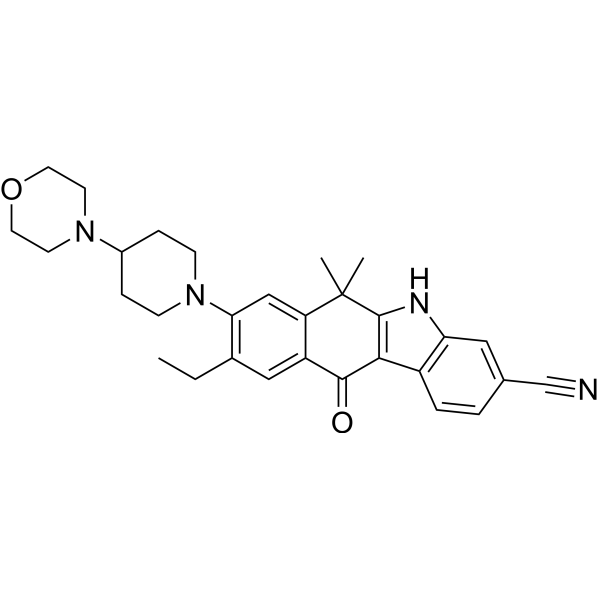
-
- HY-15196
-
TAK-285
2 Publications Verification
|
EGFR
|
Cancer
|
|
TAK-285 is a potent, selective, ATP-competitive and orally active HER2 and EGFR(HER1) inhibitor with IC50 of 17 nM and 23 nM, respectively. TAK-285 is >10-fold selectivity for HER1/2 than HER4, and less potent to MEK1/5, c-Met, Aurora B, Lck, CSK etc. TAK-285 has effective antitumor activity . TAK-285 can cross the blood-brain barrier (BBB) .
|
-
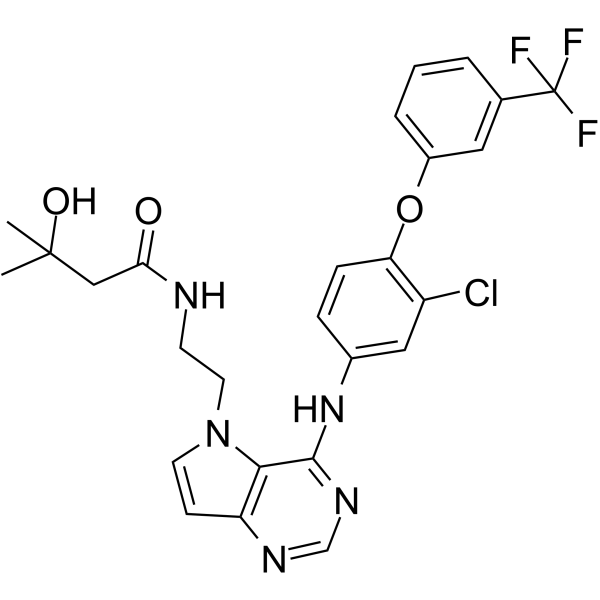
-
- HY-145695
-
|
|
Cholinesterase (ChE)
Monoamine Oxidase
|
Neurological Disease
|
|
Dual AChE-MAO B-IN-1 (compound 15) is an orally bioavailable CNS-permeant potent inhibitor of both human AChE (IC50=550 nM) and MAO B (IC50=8.2 nM). Dual AChE-MAO B-IN-1 behaves as a safe and metabolically stable neuroprotective agent, devoid of cytochrome liability .
|
-
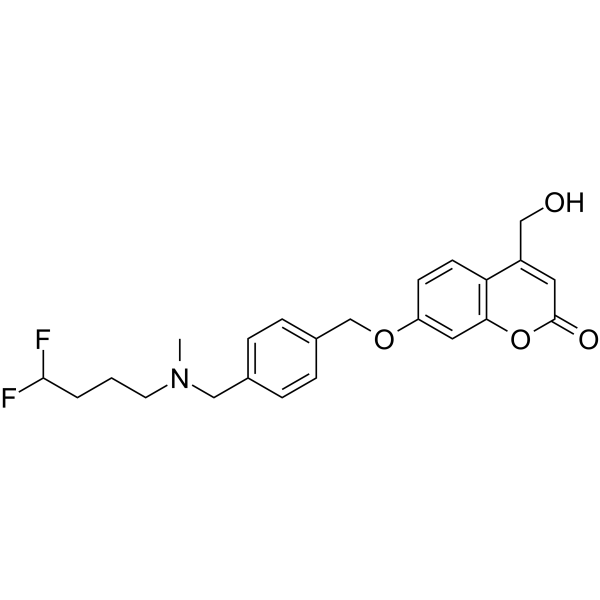
-
- HY-114331
-
|
|
MAP3K
|
Neurological Disease
|
|
DLK-IN-1 is a selective, orally active inhibitor of dual leucine zipper kinase (DLK, MAP3K12), with a Ki of 3 nM. DLK-IN-1 retains excellent CNS penetration and is well tolerated following multiple days of dosing at concentrations that exceed those required for DLK inhibition in the brain. DLK-IN-1 has activity in a model of Alzheimer’s Disease.
|
-
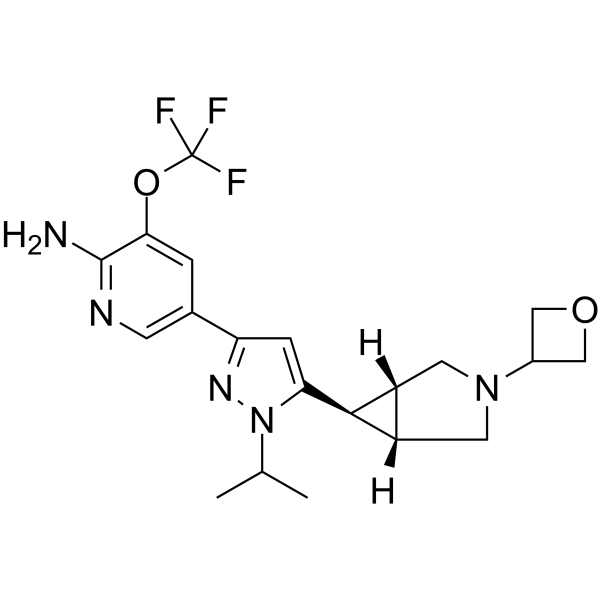
-
- HY-13011A
-
|
CH5424802 Hydrochloride; RO5424802 Hydrochloride; AF-802 Hydrochloride
|
Anaplastic lymphoma kinase (ALK)
|
Cancer
|
|
Alectinib Hydrochloride (CH5424802 Hydrochloride; RO5424802 Hydrochloride; AF-802 Hydrochloride) is a potent, selective, and orally available ALK inhibitor with an IC50 of 1.9 nM and a Kd value of 2.4 nM (in an ATP-competitive manner), and also inhibits ALK F1174L and ALK R1275Q with IC50s of 1 nM and 3.5 nM, respectively . Alectinib demonstrates effective central nervous system (CNS) penetration .
|
-
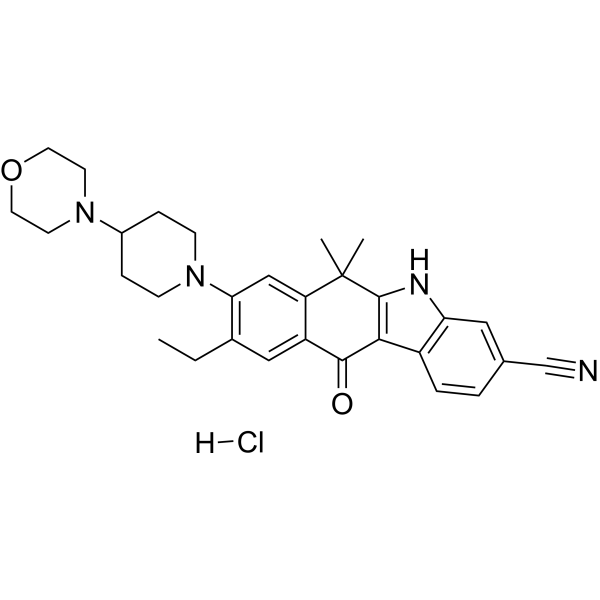
-
- HY-144372
-
|
|
TRP Channel
|
Neurological Disease
|
|
TRPV1 antagonist 3 (Compound 7q) is a potent TRPV1 antagonist with an IC50 of 2.66 nM against capsaicin. TRPV1 antagonist 3 is mode-selective, oral bioavailable (F = 60%) and CNS-penetrant .
|
-
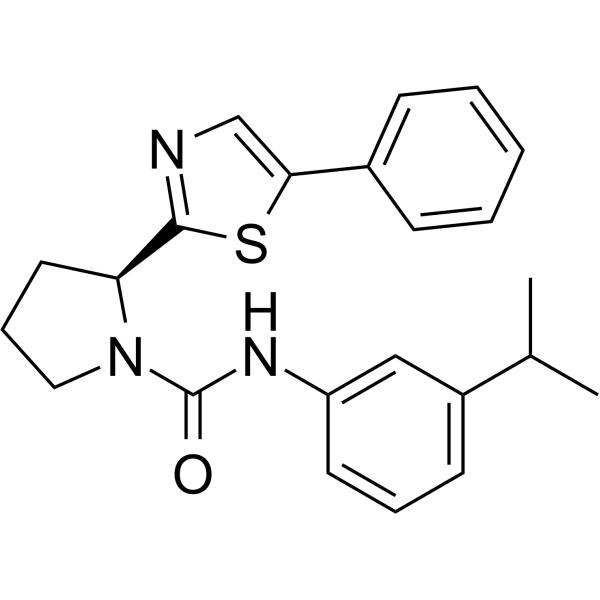
-
- HY-110191
-
|
|
mGluR
|
Neurological Disease
Cancer
|
|
VU0469650 is a potent, selective and CNS-penetrated negative allosteric modulator of mGlu1 receptor, with an IC50 of 99 nM .
|
-
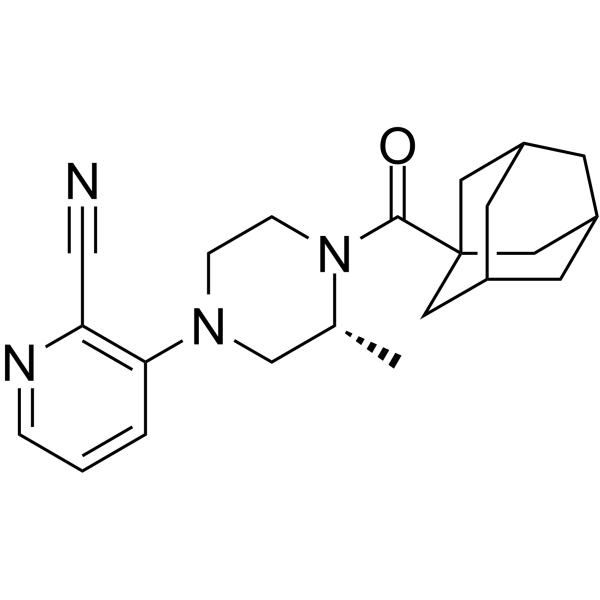
-
- HY-B0250
-
|
BCH-189
|
HIV
Reverse Transcriptase
HBV
|
Infection
Cancer
|
|
Lamivudine (BCH-189) is an orally active nucleoside reverse transcriptase inhibitor (NRTI). Lamivudine can inhibit HIV reverse transcriptase 1/2 and also the reverse transcriptase of hepatitis B virus. Lamivudine salicylate can penetrate the CNS .
|
-
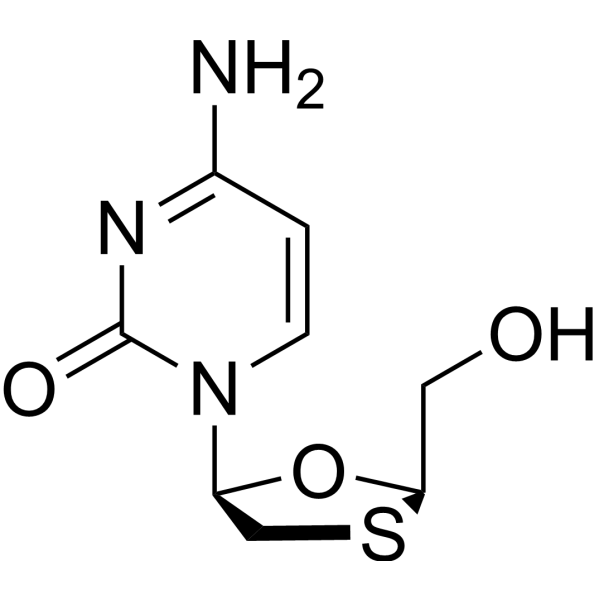
-
- HY-130795
-
|
|
GSK-3
|
Neurological Disease
|
|
GSK-3β inhibitor 2 (Compound 3) is a potent, selective and orally active GSK-3β inhibitor with an IC50 of 1.1 nM. GSK-3β inhibitor 2 can cross the blood-brain barrier. GSK-3β inhibitor 2 has the potential for Alzheimer's disease .
|
-
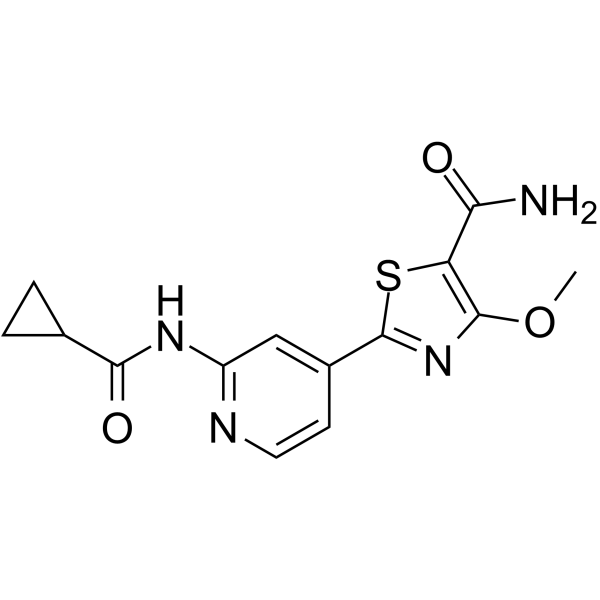
-
- HY-150503
-
|
|
HDAC
|
Neurological Disease
|
|
KH-259 (compound 1) is a potent, selective and CNS-penetrant HDAC6 inhibitor, with an IC50 of 0.26 μM. KH-259 has antidepressant effects in mice through the inhibition of HDAC6 in the brain. KH-259 can be used for neurodegenerative diseases research .
|
-
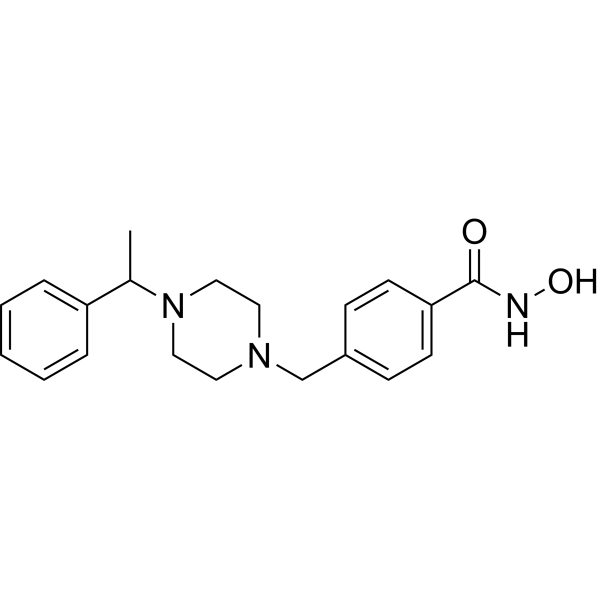
-
- HY-B0250S1
-
|
BCH-189-13C,15N2,d2
|
Isotope-Labeled Compounds
HBV
Reverse Transcriptase
HIV
|
Infection
|
|
Lamivudine-13C,15N2,d2 (BCH-189-13C,15N2,d2) is a 13C, 15N, and deuterium labeled Lamivudine (HY-B0250). Lamivudine is an orally active and blood-brain barrier permeable nucleoside reverse transcriptase inhibitor (NRTI). Lamivudine inhibits HIV reverse transcriptase 1 and 2 and hepatitis B virus (HBV) reverse transcriptase .
|
-
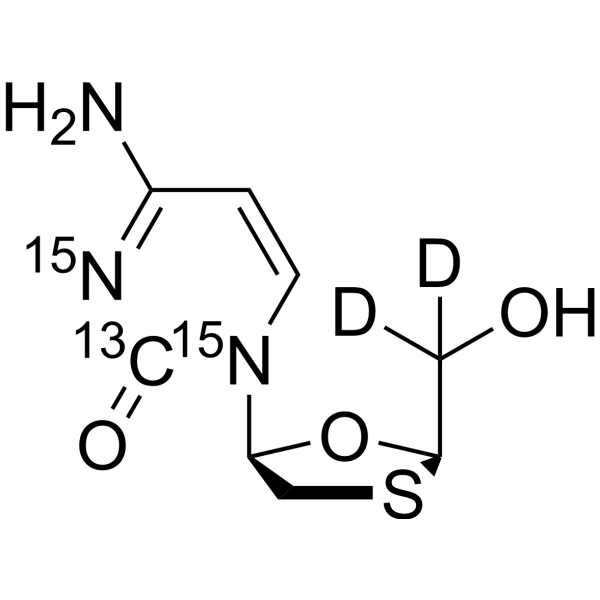
-
- HY-105685
-
|
|
Vasopressin Receptor
|
Neurological Disease
|
|
SRX246 is a potent, CNS-penetrant, highly selective, orally bioavailable vasopressin 1a (V1a) receptor antagonist (Ki=0.3 nM for human V1a). SRX246 has no interaction at V1b and V2 receptors. SRX246 also displays negligible binding at 64 others receptors classes, including 35 G-proteincoupled receptors. SRX246 can be used for treatment of stress-related disorders .
|
-
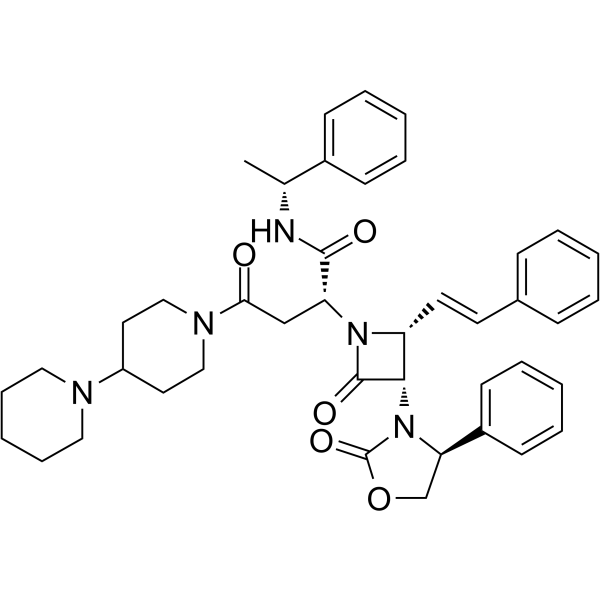
-
- HY-13637
-
|
BW 759; 2'-Nor-2'-deoxyguanosine
|
CMV
HSV
Antibiotic
Nucleoside Antimetabolite/Analog
|
Infection
Cancer
|
|
Ganciclovir (BW 759), a nucleoside analogue, is an orally active antiviral agent with activity against CMV. Ganciclovir also has activity in vitro against members of the herpes group and some other DNA viruses. Ganciclovir inhibits the in vitro replication of human herpes viruses (HSV 1 and 2, CMV) and adenovirus serotypes 1, 2, 4, 6, 8, 10, 19, 22 and 28. Ganciclovir has an IC50 of 5.2 μM for feline herpesvirus type-1 (FHV-1) and can diffuse into the brain .
|
-
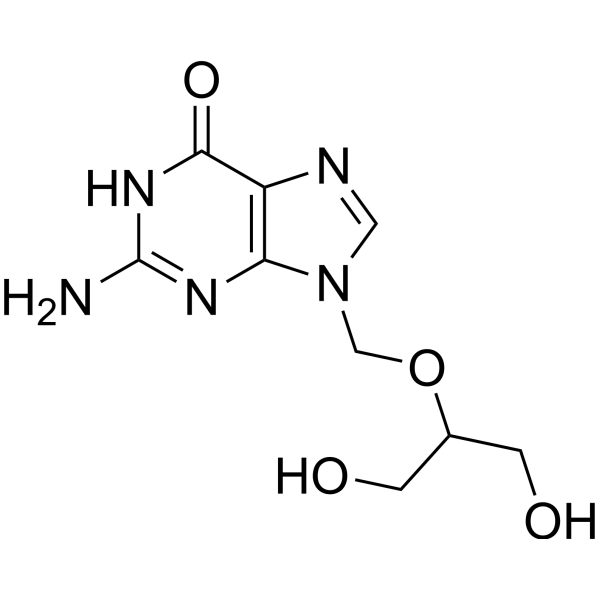
-
- HY-13637B
-
|
BW-759 hydrate; 2'-Nor-2'-deoxyguanosine hydrate
|
CMV
HSV
Antibiotic
Nucleoside Antimetabolite/Analog
|
Infection
Cancer
|
|
Ganciclovir (BW 759) hydrate, a nucleoside analogue, is an orally active antiviral agent with activity against CMV. Ganciclovir hydrate also has activity in vitro against members of the herpes group and some other DNA viruses. Ganciclovir hydrate inhibits the in vitro replication of human herpes viruses (HSV 1 and 2, CMV) and adenovirus serotypes 1, 2, 4, 6, 8, 10, 19, 22 and 28. Ganciclovir hydrate has an IC50 of 5.2 μM for feline herpesvirus type-1 (FHV-1) and can diffuse into the brain .
|
-
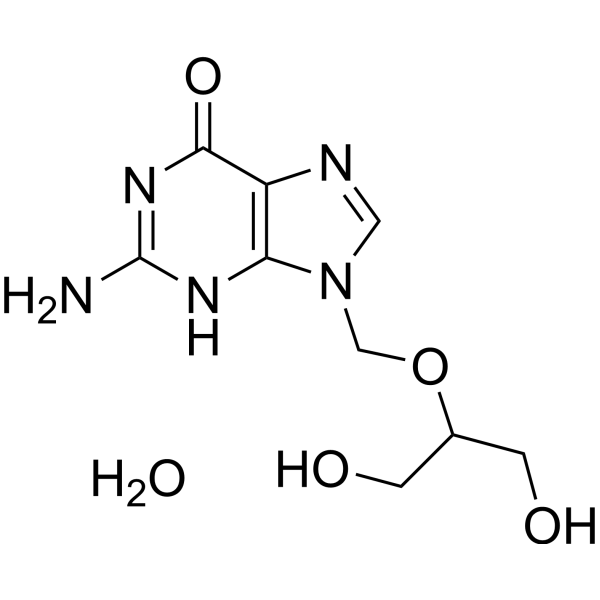
| Cat. No. |
Product Name |
Chemical Structure |
-
- HY-13011S
-
|
|
|
Alectinib-d8 is the deuterium labeled Alectinib. Alectinib (CH5424802) is a potent, selective, and orally available ALK inhibitor with an IC50 of 1.9 nM and a Kd value of 2.4 nM (in an ATP-competitive manner), and also inhibits ALK F1174L and ALK R1275Q with IC50s of 1 nM and 3.5 nM, respectively[1]. Alectinib demonstrates effective central nervous system (CNS) penetration[2].
|
-

-
- HY-13011S1
-
|
|
|
Alectinib-d6 is deuterium labeled Alectinib. Alectinib (CH5424802) is a potent, selective, and orally available ALK inhibitor with an IC50 of 1.9 nM and a Kd value of 2.4 nM (in an ATP-competitive manner), and also inhibits ALK F1174L and ALK R1275Q with IC50s of 1 nM and 3.5 nM, respectively[1]. Alectinib demonstrates effective central nervous system (CNS) penetration[2].
|
-

-
- HY-B0250S1
-
|
|
|
Lamivudine-13C,15N2,d2 (BCH-189-13C,15N2,d2) is a 13C, 15N, and deuterium labeled Lamivudine (HY-B0250). Lamivudine is an orally active and blood-brain barrier permeable nucleoside reverse transcriptase inhibitor (NRTI). Lamivudine inhibits HIV reverse transcriptase 1 and 2 and hepatitis B virus (HBV) reverse transcriptase .
|
-

Your information is safe with us. * Required Fields.
Inquiry Information
- Product Name:
- Cat. No.:
- Quantity:
- MCE Japan Authorized Agent:












































